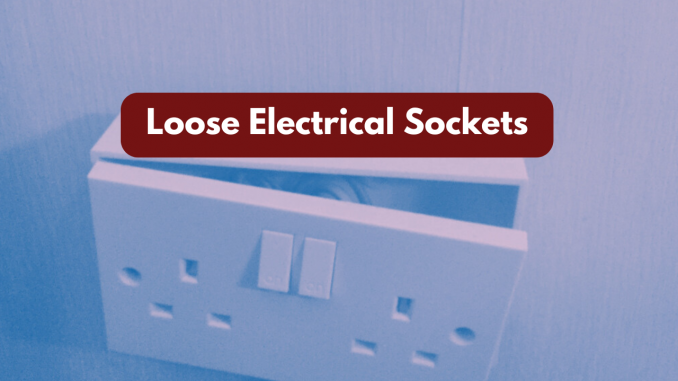
Loose electrical sockets are a common issue in homes, but they should never be ignored. A wobbly or unstable socket can be more than just an inconvenience—it can pose a serious safety hazard. In this guide, we’ll explore why loose sockets are dangerous, the possible causes, and how you can fix them properly.
Is a Loose Socket Dangerous?
A loose electrical socket can be dangerous for several reasons. One major risk is electric shock. A loose socket may expose live wires, increasing the risk of accidental contact. This can be especially hazardous for children or pets who might unknowingly touch the exposed parts.
Another serious concern is the fire hazard posed by a loose socket. Poor connections within the socket can cause electrical arcing, which generates heat and may lead to a fire. Over time, this can pose a significant risk to your home’s safety.
A loose socket can also lead to damage to wiring. Movement in the socket can cause wires to fray or disconnect, leading to intermittent power issues or short circuits that could damage appliances or create further electrical hazards.
Common Causes of Loose Sockets
Understanding what causes sockets to become loose can help prevent the issue from recurring. One common cause is worn or broken fixings. Over time, the screws securing the socket plate to the wall can become loose, leading to instability. If the socket is installed in a weak or crumbling wall surface, such as plaster that has deteriorated over time, the fixings may not hold properly, causing the socket to move.
Frequent plugging and unplugging of devices can also contribute to the problem. Constantly inserting and removing plugs can gradually loosen the socket, especially if excessive force is used. Incorrect installation can also be a factor. A poorly installed socket may not have been secured properly in the first place, leading to instability over time.
How to Fix a Loose Socket
If you notice a loose socket, the first step is to turn off the power. Before doing any electrical work, switch off the power at the consumer unit (fuse box) and test to ensure the socket is no longer live. Once the power is off, remove the socket faceplate by unscrewing it and carefully pulling it forward to expose the wires and mounting box.
Next, check the fixings to see if the screws securing the socket to the wall are loose. Tighten them if needed. If the screw holes are worn, consider using larger screws or wall plugs for a firmer hold. At this point, inspect the wiring to ensure the wires are securely connected to the terminals. If any wires are damaged, they should be trimmed and reattached properly.
If the back box—the part inside the wall—is loose, it should be reinforced with appropriate fixings or a mounting bracket to stabilise it. Once everything is secure, reassemble the socket by refitting the faceplate, turn the power back on, and test the socket to ensure it functions correctly.
When to Call an Electrician
If you’re unsure about any part of the repair process or notice damaged wiring, it’s best to contact a qualified electrician. Electrical work can be dangerous if not done correctly, so don’t take risks with your safety. A professional can assess the issue and ensure that the repair is done to proper safety standards.
A loose electrical socket is more than just an annoyance—it’s a potential safety hazard. By understanding the risks, identifying the causes, and following the correct steps to secure the socket, you can ensure a safer home environment. If in doubt, always seek professional assistance to prevent electrical accidents.

Leave a Reply